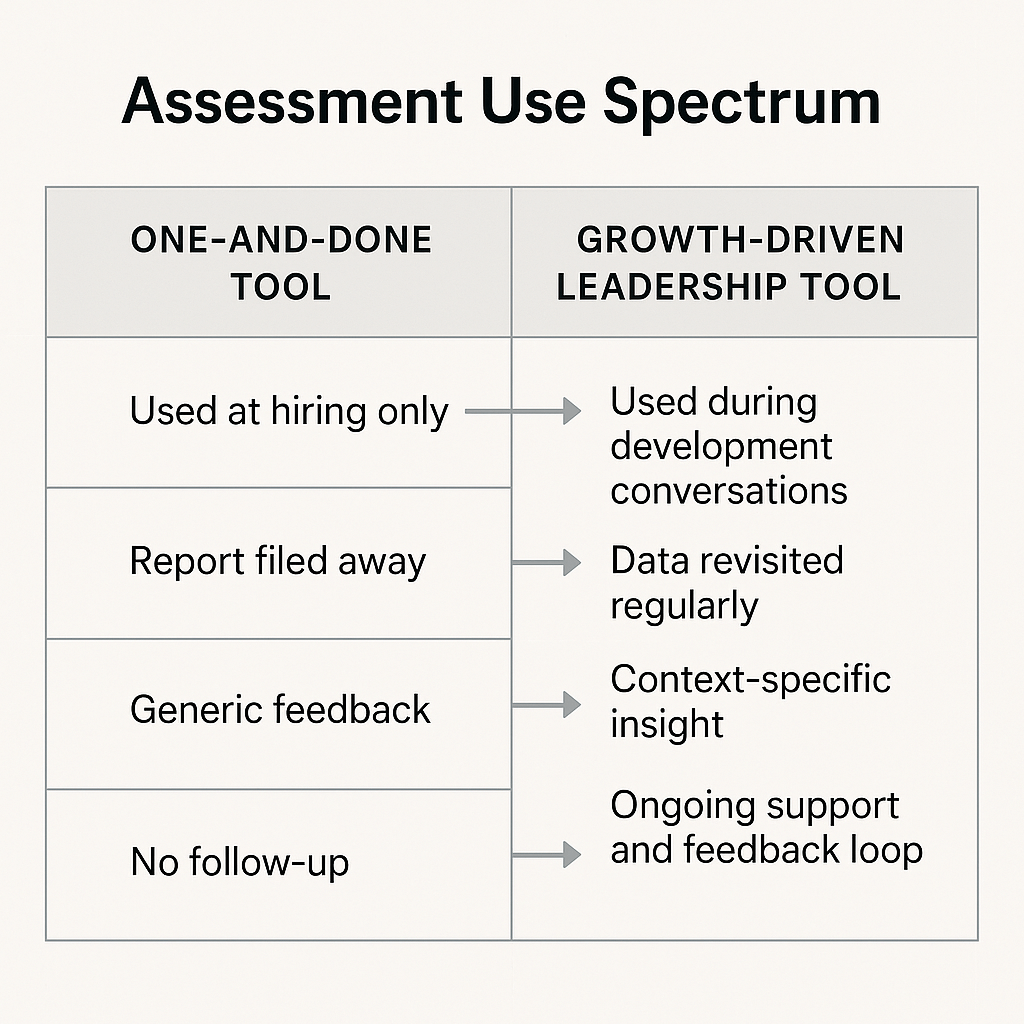A lot of companies treat executive assessments like a final exam. Someone gets promoted, hired, or tapped as a successor — and we run a 360 or a leadership assessment just to make sure they “check out.”
Then the report goes into a folder. Maybe someone says, “Seems like a good fit.” And that’s it.
Why That’s a Missed Opportunity
When assessments are used only to make a leadership decision, you lose the real value: helping someone grow into what’s next.
You’re not just checking boxes. You’re shaping the future of your team — and your business.
Why Gut Feel Isn’t Enough in Leadership Decisions
Let’s be honest: leadership promotions and succession planning still lean heavily on instincts and past performance.
That works… until it doesn’t.
We’ve seen it happen:
- Leaders get promoted too fast and then quietly struggle.
- High-potential internal candidates get overlooked because their style isn’t familiar.
- Derailing behaviors pop up under pressure — and no one saw them coming.
A good leadership assessment won’t eliminate all risk. But it gives you a sharper lens on how someone leads, where they thrive, and what challenges might trip them up.
How to Use Executive Assessment Data for Real Development
If you’re investing in assessments, get more from them. Here’s how leading companies are doing it:
1. Turn Results into Real Conversations
A strong assessment gives language to what leaders already feel.
“You tend to take over under pressure” isn’t a red flag — it’s a starting point.
Make it okay to name behaviors and work on them. That’s where growth begins.
2. Make It Specific to the Role
Assertiveness might be a strength in a Sales VP. In a COO role? It could create friction.
The best assessments are contextual. Interpret results based on what the job actually requires — not just generic competencies.
3. Build a Focused Growth Plan
You don’t need a 12-page write-up. Just one or two behaviors to lean into or pull back — tied to real business goals — is plenty.
Most leaders want feedback they can act on, not theory.
4. Support the Leader Through It
Coaching helps. But even regular check-ins with internal stakeholders can make a difference.
Don’t treat development like a download. It’s a conversation that evolves.
5. Revisit It — Don’t Let It Collect Dust
The best teams treat assessment data like strategy docs: as living tools.
Bring it into performance reviews, team offsites, or milestone conversations. Growth isn’t a one-and-done event.

The Bottom Line: From Snapshot to Strategy
Executive assessments can do more than vet candidates. Done right, they help leaders grow faster, lead better, and avoid common pitfalls that even high performers can’t always see in themselves.
Want to turn assessment data into a growth plan that sticks? Let’s talk.


Comments are closed for this article!